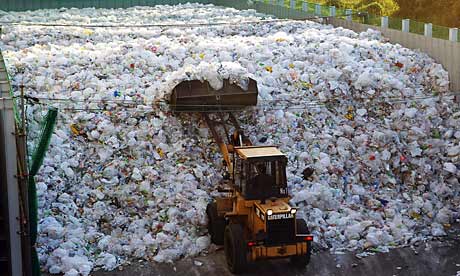The durability of plastic materials is both a benefit and a liability. Many plastics can withstand harsh weather, salt spray, ultraviolet light, and mechanical stress for years without visible effect. Unfortunately, this durability also means that when we are done with the plastic, it persists in our waste stream for years, resisting breakdown. A view of any public landfill will show mountains of plastic material. The well-publicized Great Pacific garbage patch, a swirling field of plastic debris estimated at a minimum size of the state of Texas to twice the size of the United States, is the result of years of floating plastic particulate debris accumulating under the influence of ocean currents. Although some photodegradation will occur in some plastics, the debris can persist for decades.
Perhaps the solution to plastic accumulation can be found in the lowly caterpillar. A recent news article suggests that the waxworm, a caterpillar who evolved to consume beeswax as a food source, also appears to digest polyethylene, at least according to one researcher. Waxworms were transported in polyethylene shopping bags, and were able to reduce the bags to shreds in a few hours, with no visible signs of particulate debris. The researchers believe that the polyethylene was being converted to ethylene glycol (e.g. antifreeze), although more data is required. The question is, what are the chemicals or enzymes in the waxworm that allows this process, assuming the observations are correct? If they can be identified, can they be produced and applied on a larger scale to reduce the persistence of plastic debris?


